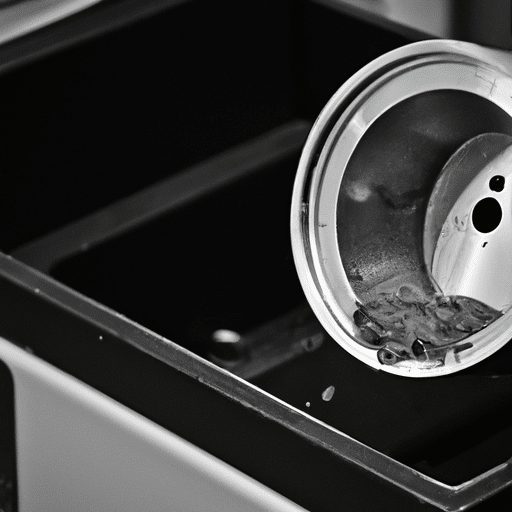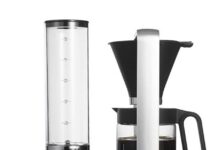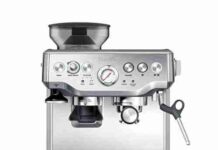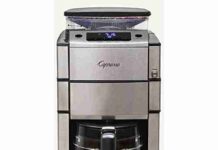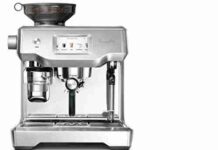Coffee makers are essential appliances in many households, ensuring that we start our days off with a delightful cup of java. However, over time, the buildup of mineral deposits and impurities can affect the taste and even the functionality of our beloved coffee maker. So, what is the best way to descale a coffee maker and bring back its optimum performance? In this article, we will explore effective descaling methods that are both simple and efficient, ensuring that your coffee maker consistently delivers the perfect cup of coffee.
Understanding the Importance of Descaling
Scaling, which is the buildup of mineral deposits in your coffee maker over time, is something that many coffee lovers may overlook. However, descaling is a vital maintenance step that should not be dismissed. Descaling not only helps to maintain the optimum flavor of your coffee but also ensures that your coffee maker functions efficiently and lasts longer. By understanding the importance of descaling, you can ensure that every cup of coffee you brew is of the highest quality.
Why Descaling is Necessary
Over time, minerals such as calcium and magnesium from the water you use to brew coffee can accumulate on the internal components of your coffee maker. These mineral deposits, commonly known as scale, can clog pipes, valves, and heating elements, slowing down the brewing process and affecting the taste of your coffee. Descaling removes these deposits, allowing your coffee maker to work at its best and ensuring that each brew is rich, flavorful, and smooth.
Effects of Not Descaling
Neglecting to descale your coffee maker can have various negative effects. First and foremost, the buildup of scale can impede the flow of water throughout the machine, which can lead to slower brew times and weaker coffee. Additionally, scale can affect the heating element’s performance, causing it to consume more energy and potentially shortening its lifespan. Lastly, the accumulation of scale can also contribute to bacteria growth, affecting the overall hygiene of your coffee maker. Thus, regular descaling is crucial to maintain both the taste and functionality of your beloved coffee maker.
Recommended Frequency of Descaling
The frequency at which you should descale your coffee maker depends on several factors, such as the hardness of your water and how often you use your machine. As a general guideline, it is recommended to descale your coffee maker every three to six months. However, if you live in an area with particularly hard water or use your coffee maker frequently, you may need to descale more frequently. Pay attention to any signs of scale build-up, such as slower brewing times or a change in taste, and adjust your descaling schedule accordingly. Remember, regular descaling will help you brew delicious coffee consistently and extend the lifespan of your coffee maker.
Choosing the Right Descaling Solution
When it comes to selecting a descaling solution for your coffee maker, there are a few options to consider. Vinegar, citric acid, and commercial descaling solutions are all popular choices, each with its pros and cons. To make an informed decision, it’s essential to understand the characteristics and considerations associated with each descaling solution.
Vinegar
Vinegar, specifically white distilled vinegar, is a commonly used household ingredient for descaling coffee makers. It is readily available, affordable, and effective at removing scale. However, vinegar has a strong odor that may linger in your coffee maker if not rinsed and flushed thoroughly. Some coffee enthusiasts also find that the taste of vinegar can impact the flavor of their brews, even after rinsing. Nevertheless, vinegar can be a suitable descaling solution for those who are looking for a budget-friendly and easily accessible option.
Citric Acid
Citric acid, often sold in powdered form, is a natural descaling agent derived from citrus fruits. It is widely used in the food industry and has proven to be effective in eliminating scale from coffee makers. Unlike vinegar, citric acid does not leave a strong odor or taste, making it a preferred choice for those concerned about residual flavors. However, citric acid may be more challenging to find in local stores compared to vinegar and may be slightly more expensive. For those seeking a descaling solution that is easy to use and leaves no aftertaste, citric acid is an excellent option.
Commercial Descaling Solutions
If you prefer a hassle-free descaling experience, commercial descaling solutions designed specifically for coffee makers are worth considering. These solutions often come in liquid form and are formulated to dissolve scale quickly and effectively. Commercial descaling solutions are generally easy to use and require minimal rinsing. They also tend to be odorless and do not leave any lingering tastes. However, the convenience of commercial descaling solutions often comes at a higher price point compared to vinegar or citric acid. If budget is not a concern, using a commercial descaling solution can simplify the descaling process and provide peace of mind knowing that your coffee maker is well-maintained.
Factors to Consider
When choosing the right descaling solution, it’s essential to consider the specific requirements of your coffee maker, as well as your personal preferences. Take into account factors such as the type of coffee maker you have, the severity of the scale buildup, and any potential concerns about taste or odor. Research the manufacturer’s recommendations and guidelines regarding descaling to ensure compatibility with your machine. By carefully evaluating these factors, you can make an informed decision and select the descaling solution that best fits your needs and preferences.
Preparing the Coffee Maker for Descaling
Before diving into the descaling process, it’s crucial to prepare your coffee maker properly. By gathering the necessary materials, emptying and cleaning the coffee maker, and removing any detachable parts, you will set yourself up for a successful descaling experience.
Gather Necessary Materials
To begin, gather all the materials you will need for the descaling process. These typically include your chosen descaling solution, water, a clean cloth or sponge, and a container or measuring cup for mixing the solution. Additionally, consult your coffee maker’s instructions or manufacturer’s recommendations for any specific materials or tools that may be required. By having all the necessary materials prepared in advance, you can streamline the descaling process and avoid interruptions or delays.
Empty and Clean the Coffee Maker
Emptying and cleaning your coffee maker before descaling is crucial to remove any coffee grounds, oils, or residue that may interfere with the descaling solution’s effectiveness. Start by discarding any remaining coffee or filters from the machine. Wash the coffee pot, coffee filter basket, and any detachable parts with warm, soapy water. Gently scrub away any stubborn stains or deposits. Once clean, thoroughly rinse all components to ensure there are no traces of soap or residue left behind. A clean coffee maker is essential for optimal performance and effective descaling.
Remove Any Detachable Parts
If your coffee maker has detachable parts, such as the water reservoir or showerhead, it is recommended to remove and clean them separately. Detachable parts can often accumulate mineral deposits more quickly than other components. Refer to your coffee maker’s instructions to locate and remove these parts safely. Clean them thoroughly using warm, soapy water, and rinse off any soap residue. By cleaning each component individually, you ensure a comprehensive and thorough descaling process.
Using Vinegar for Descaling
Vinegar is a popular and cost-effective descaling solution that can effectively eliminate scale from your coffee maker. By diluting vinegar with water and running the solution through the machine, followed by a thorough rinsing and flushing, you can ensure a clean and scale-free coffee maker.
Diluting Vinegar with Water
To begin the descaling process with vinegar, dilute the vinegar with an equal amount of water. For example, if you are using one cup of vinegar, mix it with one cup of water. This dilution helps to mitigate the strong odor of vinegar and prevent any potential pungent taste in your subsequent brews. Thoroughly mixing the vinegar and water ensures an even distribution of the descaling solution.
Running the Descaling Solution Through the Coffee Maker
Once the vinegar and water solution is prepared, pour it into the water reservoir of your coffee maker. Ensure that all detachable parts are properly reattached and that the coffee pot is in place. Power on the machine and initiate a brewing cycle without adding coffee or a filter. This process allows the descaling solution to circulate throughout the internal components, removing scale and mineral buildup. As the solution passes through the machine, you may notice dislodged mineral deposits being flushed out. Allow the descaling solution to cycle through the machine fully.
Rinsing and Flushing the Coffee Maker
After completing the descaling cycle with vinegar, it is vital to rinse and flush your coffee maker thoroughly. Empty the water reservoir and discard any remaining vinegar solution. Rinse the reservoir with clean water to remove any traces of vinegar. Fill the reservoir with fresh water, and activate another brewing cycle without coffee or a filter. Repeat this process multiple times to ensure that all vinegar and scale residue are completely flushed out. Ensure that each cycle is followed by a thorough rinse to eliminate any lingering vinegar taste or odor. Rinsing and flushing are essential steps to restore your coffee maker to its optimal condition.
Using Citric Acid for Descaling
Citric acid is a natural descaling agent that offers an effective and odorless alternative to vinegar. By dissolving citric acid in water and running the solution through your coffee maker, followed by rinsing and flushing, you can achieve excellent descaling results without any residual taste or smell.
Dissolving Citric Acid in Water
To utilize citric acid for descaling, begin by dissolving the appropriate amount of citric acid powder in water. Follow the instructions provided on the packaging to determine the suitable ratio of citric acid to water. Typically, a solution containing one to two tablespoons of citric acid mixed with one liter of water is sufficient for descaling a coffee maker. Thoroughly mix the citric acid and water to ensure a fully dissolved solution.
Running the Descaling Solution Through the Coffee Maker
Once the citric acid solution is prepared, pour it into the water reservoir of your coffee maker. Similar to the vinegar descaling process, ensure that all detachable parts are properly reattached, and the coffee pot is in place. Power on the machine and initiate a brewing cycle without coffee or a filter. As the citric acid solution circulates through the coffee maker, it dissolves and removes scale, leaving your machine clean and ready for brewing delicious coffee.
Rinsing and Flushing the Coffee Maker
After the descaling cycle with citric acid is complete, it is crucial to rinse and flush your coffee maker thoroughly. Empty the water reservoir and discard any remaining citric acid solution. Rinse the reservoir with clean water to eliminate any traces of citric acid. Fill the reservoir with fresh water, and activate multiple brewing cycles without coffee or a filter. Repeat this rinsing and flushing process several times to ensure that all citric acid and scale residue are completely removed. The final step is to conduct a final rinse to guarantee that no lingering taste or odor remains. Rinsing and flushing play a vital role in maintaining the optimal performance of your coffee maker.
Using Commercial Descaling Solutions
Commercial descaling solutions tailored specifically for coffee makers offer a convenient and effective way to descale your machine. By following the manufacturer’s instructions, running the descaling solution through your coffee maker, and thoroughly rinsing and flushing, you can ensure that your machine is free from scale and operating at its best.
Following Manufacturer’s Instructions
Before using a commercial descaling solution, carefully read and follow the instructions provided by the manufacturer. Each brand may have specific guidelines and recommended dilution ratios, so it is essential to adhere to their instructions for the best results. Familiarize yourself with any safety precautions or additional steps suggested by the manufacturer. By following the instructions diligently, you can confidently proceed with the descaling process and achieve optimal descaling outcomes.
Running the Descaling Solution Through the Coffee Maker
Once you have prepared the commercial descaling solution according to the manufacturer’s instructions, proceed to pour it into the water reservoir of your coffee maker. Confirm that all detachable parts are correctly reattached, and the coffee pot is in place. Power on the machine and activate a brewing cycle without coffee or a filter. Allow the descaling solution to cycle through the machine, penetrating and removing scale from the internal components. Follow the manufacturer’s recommended duration for the descaling process to ensure its effectiveness.
Rinsing and Flushing the Coffee Maker
Upon the completion of the descaling cycle with the commercial solution, it is essential to rinse and flush your coffee maker thoroughly. Empty the water reservoir and discard any remaining descaling solution. Rinse the reservoir with clean water, making sure to eliminate any traces of the solution. Fill the reservoir with fresh water, and initiate multiple brewing cycles without coffee or a filter, following the same process as before. Repeat the rinsing and flushing step multiple times to guarantee the complete removal of the descaling solution and any residual scale. Finally, conduct a final rinse to ensure no lingering taste or odor remains. Proper rinsing and flushing are critical for the long-term maintenance and functionality of your coffee maker.
Alternative Descaling Methods
While vinegar, citric acid, and commercial descaling solutions are the most commonly used descaling agents, there are some alternative methods that you can try. These methods may be suitable for specific situations or personal preferences and can provide a viable solution for descaling your coffee maker effectively.
Baking Soda and Water
Baking soda, known for its natural cleaning properties, can be combined with water to create a paste and used as a descaling agent. Mix one part baking soda with one part water to form a paste-like consistency. Apply the paste to the interior components of your coffee maker, focusing on areas with visible scale buildup. Allow the paste to sit for a few minutes, then gently scrub with a sponge or soft brush. Rinse and flush the coffee maker thoroughly to remove any baking soda residue.
Denture Tablets
Denture tablets, designed to clean and disinfect dentures, can also be utilized for coffee maker descaling. Dissolve a few denture tablets in warm water, following the instructions provided by the manufacturer. Submerge the internal components of your coffee maker, such as the water reservoir and coffee pot, in the denture tablet solution. Allow them to soak for the recommended duration, ensuring that the solution penetrates and dissolves the scale effectively. After the soaking period, thoroughly rinse and flush each component to remove any remaining solution.
Lemon Juice
Lemon juice, with its acidic properties, can serve as a natural descaling agent. Squeeze fresh lemon juice into a container and dilute it with an equal amount of water. Pour the lemon juice solution into the water reservoir of your coffee maker, and run a brewing cycle without coffee or a filter. Allow the solution to circulate throughout the machine, dissolving and eliminating scale. Rinse and flush your coffee maker thoroughly with clean water multiple times to remove any lemon juice residue.
Using a Descaling Agent and Descaling Cycle
Certain coffee makers may come equipped with a descaling agent and a dedicated descaling cycle. If your machine has this feature, follow the manufacturer’s instructions for using the descaling agent and activating the descaling cycle. Most machines will prompt you to add the descaling agent and water solution to the water reservoir, and then initiate the descaling cycle. As the cycle progresses, the descaling agent will circulate through the coffee maker, effectively removing scale. Rinse and flush your coffee maker thoroughly after the descaling cycle to ensure the complete removal of any residual descaling agent or scale particles.
Cleaning and Descaling Individual Coffee Maker Components
Apart from descaling the entire coffee maker, it is also essential to pay attention to individual components that can accumulate scale and other residues over time. By regularly cleaning and descaling these specific parts, you can maintain the overall hygiene and functionality of your coffee maker.
The Water Reservoir
The water reservoir is a significant component that requires regular cleaning and descaling. Depending on your coffee maker model, the water reservoir may be detachable or integrated. For detachable water reservoirs, carefully remove it from the coffee maker and wash it with warm, soapy water. Pay special attention to any corners or crevices where scale may accumulate. Rinse the reservoir thoroughly to remove any soap residue, then descale using your chosen descaling solution. For integrated water reservoirs, consult your coffee maker’s instructions for cleaning and descaling recommendations. Follow these guidelines to ensure proper maintenance and cleanliness.
The Coffee Pot
The coffee pot, or carafe, that holds your brewed coffee should be cleaned regularly to prevent the buildup of coffee stains and residues. After each use, rinse the coffee pot with warm water to remove any remaining coffee. If necessary, use a gentle dish soap and a non-abrasive sponge or brush to remove stubborn stains. Ensure that you rinse the coffee pot thoroughly, eliminating all soap residue. Regular cleaning of the coffee pot will not only maintain its appearance but also prevent any potential contamination or interference with the taste of your coffee.
The Coffee Filter Basket
The coffee filter basket, where you place your coffee filter and grounds, can also collect debris and oils over time. Remove the filter basket from your coffee maker according to the manufacturer’s instructions. Wash the filter basket with warm, soapy water to remove any coffee residue or oil buildup. Use a sponge or brush to gently scrub away any stubborn stains. Rinse the filter basket thoroughly to eliminate any soap residue. By cleaning the filter basket regularly, you ensure that your coffee brews taste clean and free from any unwanted flavors.
The Showerhead
The showerhead, responsible for evenly distributing water over the coffee grounds, can also accumulate mineral deposits and coffee residues. Consult your coffee maker’s instructions to locate the showerhead and determine the best approach for cleaning and descaling. In most cases, the showerhead can be cleaned by running a descaling solution through the machine, following the descaling methods mentioned earlier. Alternatively, you may remove the showerhead and soak it in a descaling solution separately. Ensure that the showerhead is thoroughly rinsed and flushed before reattaching it to the coffee maker. Cleaning the showerhead on a regular basis will help maintain optimal water distribution and prevent any clogs or uneven brewing.
Preventing Scale Build-Up in the Coffee Maker
While descaling is essential for maintaining your coffee maker’s performance, preventing scale build-up in the first place can save you time and effort in the long run. By implementing a few preventive measures, you can minimize scale accumulation and prolong the life of your coffee maker.
Using Filtered Water
The quality of the water you use to brew your coffee plays a significant role in scale formation. Using filtered water reduces the mineral content and impurities present in tap water, reducing the risk of scale buildup. Consider investing in a water filter pitcher or a faucet-mounted filter to ensure that the water you use is as pure as possible. Avoid using distilled water, as it lacks the necessary minerals for an optimal brewing experience. Striking a balance between filtered water and the right mineral content can help prevent scale and maintain the desired flavor profile of your coffee.
Regular Cleaning and Maintenance
In addition to descaling, regular cleaning and maintenance of your coffee maker are crucial in preventing scale build-up. Empty and rinse the coffee pot and filter basket after each use, removing any residue or coffee grounds. Wipe the exterior of the coffee maker regularly to remove any dust or stains. Check for any visible signs of scale on the heating element or other internal components and clean them promptly. These routine cleaning practices help prevent scale from accumulating and ensure the longevity of your coffee maker.
Using a Water Softener
If you live in an area with exceptionally hard water, using a water softener can significantly reduce scale formation. Water softeners work by removing or neutralizing the minerals responsible for scale. Consult your coffee maker’s instructions or contact the manufacturer to determine if using a water softener is compatible with your machine. Implementing a water softener can alleviate the need for frequent descaling and keep your coffee maker in optimal condition.
Descaling Indicator and Automatic Descaling
Some advanced coffee makers come equipped with a descale indicator or an automatic descaling function. These features make descaling easier by monitoring the machine’s internal condition and notifying you when descaling is necessary. If your coffee maker has a descale indicator, pay attention to the provided alerts and descale accordingly. For models with an automatic descaling function, follow the manufacturer’s instructions to initiate the process. By utilizing these built-in features, you can ensure that your coffee maker receives the appropriate maintenance and descaling when needed, ultimately prolonging its lifespan.
Conclusion
Regularly descaling your coffee maker is an essential maintenance step that should not be overlooked. By understanding the importance of descaling and the negative effects of neglecting it, you can ensure that your coffee is consistently rich, flavorful, and smooth. Choosing the right descaling solution for your coffee maker is crucial, considering factors such as availability, cost, and personal preferences. Whether you opt for vinegar, citric acid, or commercial descaling solutions, following the proper procedures and rinsing thoroughly is key to maintaining the taste and functionality of your machine.
Preparing your coffee maker for descaling by gathering the necessary materials, emptying and cleaning the machine, and removing detachable parts sets the foundation for a successful descaling process. Using vinegar, citric acid, or commercial descaling solutions involves diluting the solution, running the descaling cycle, and thoroughly rinsing and flushing the coffee maker. Alternative descaling methods such as baking soda, denture tablets, lemon juice, or using a descaling agent and descaling cycle can be useful in specific circumstances.
It is essential to pay attention to individual coffee maker components, such as the water reservoir, coffee pot, filter basket, and showerhead, by cleaning and descaling them regularly. Implementing preventive measures such as using filtered water, regular cleaning and maintenance, using a water softener, and taking advantage of descaling indicators or automatic descaling functions can help prevent scale build-up and maintain optimal coffee taste.
By appreciating the importance of regular descaling, choosing the best descaling solution, and diligently maintaining your coffee maker, you can ensure a delightful, flavorful, and long-lasting coffee brewing experience. Cheers to enjoying countless cups of perfectly brewed coffee!


